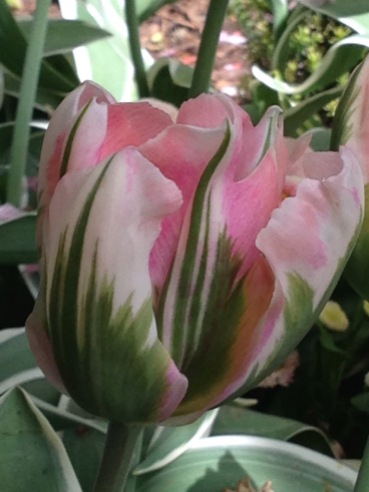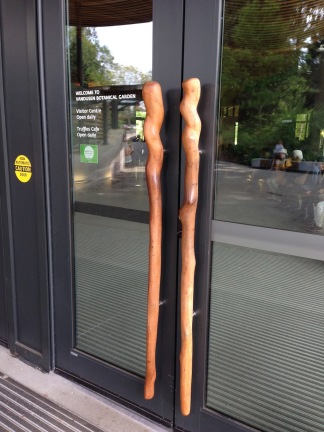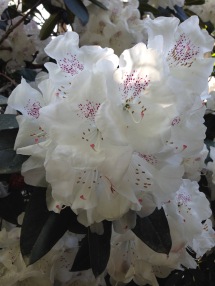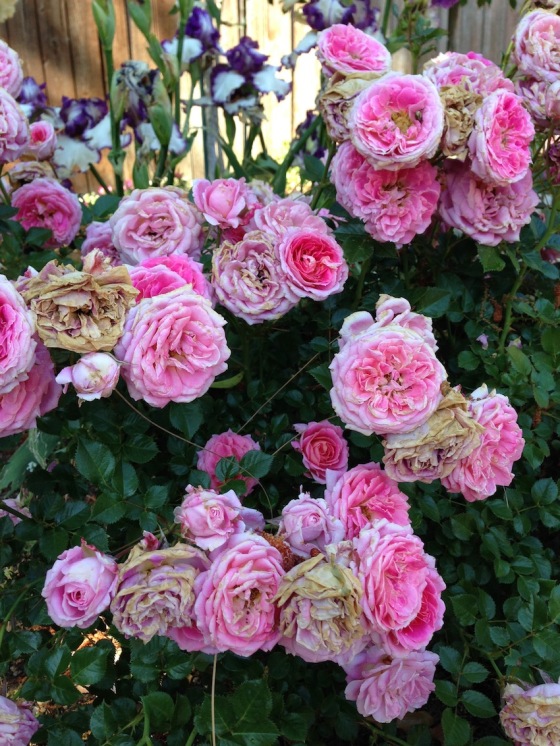Now that borders have been crossed and delayed luggage has been delivered there’s a bit of time to share with you my final FLOWER FRENZIED experience of this past week in Vancouver and Victoria, British Columbia.
With three very different garden adventures on my trip’s itinerary and no advance plan for the order in which I would do them, I now think their order was providential in giving me an interesting progression of the gardens’ purposes, design aesthetics and plant materials.
The UBC Botanical Garden, by its very nature of being university and research based, is very specimen centered. There is little to no disturbance to the naturally forested area in which the garden has been developed and plant colonies/collections are allowed to grow and fill areas relatively naturally. Even though not all plants are natives and there are several areas devoted to plants growing in special type of geography, i.e. the Alpine collection, the overall vibe is calming and very natural. Many visitors come daily to stroll, read or just relax. For me it was a close-up garden and I spent a lot on time on my knees examining individual specimens and exploring their leaf and flower characteristics.
The VanDusen Botanical Garden grew from a community’s desire to maintain open and public spaces within the confines of a busy metropolitan area. The founders saw an existing parcel of no longer used land as a perfect backdrop for building a botanical garden by adding not only shrub and perennial plantings but also many specimens and groupings of deciduous and evergreen trees. Structures, hardscape paths, water features and sculptures all provide focal points which both harmonize with and are in contrast to the planted areas. They also make the garden very sought after for private and public events, thus increasing its use by the city’s residents. This garden offered me many opportunities to view and photograph a variety of plant combinations, both color and texture, and take some of these companion ideas home to try out on a smaller scale.
My final garden stop was the awe inspiring Butchart Gardens in Victoria, on Vancouver Island. Dave took time off from his conference to join me and after being the lucky last car on the ferry and enjoying the beautiful vistas as we cruised the bay, we found ourselves driving through rolling farmlands to see one woman’s backyard garden. Jennie Butchart’s vision for a way to use a played out limestone pit and block the view of her husband Robert’s cement plant has evolved over many decades to be an attraction of almost Disney-esque proportions, minus the costumed characters and rides. The Butchart home was built in 1904 on 120 acres at the base of the Saanich Peninsula near the limestone quarry used in Mr. Butchart’s cement production. Jennie built her first formal garden, the Japanese Garden, a few years later with the help of a famous garden designer from Yokohama, Japan. The Butchart Sunken Garden was developed in the old quarry between 1909 and 1921 and Mrs. Butchart continued to add themed gardens, totally 55 acres, until the late 1920s. In 2004, the Gardens were designated a Canadian National Historic Site. These beautifully executed and maintained gardens for me were definitely long view gardens and, to that end, I offer you a few long vistas of Jennie’s dream.




The Butchart Garden has been blooming for over 100 years and is still family owned and managed. Although it is manicured and maintained on a grand scale, there were still many “take aways” that could be executed on a much smaller scale in my own garden. Clearly, I will have to increase the line item for tulips in my garden budget by about $100,000! Having said that, I just can’t resist closing with the photos below.









































































